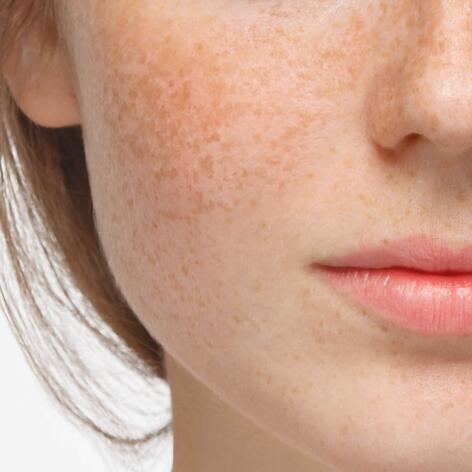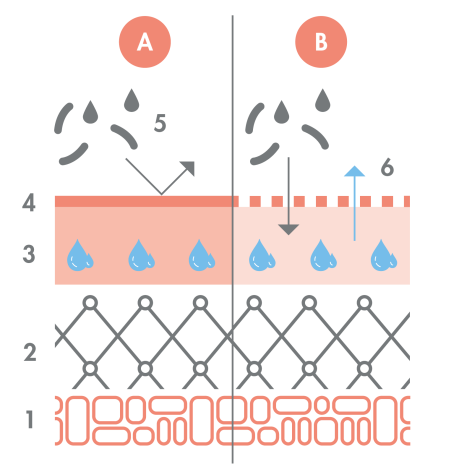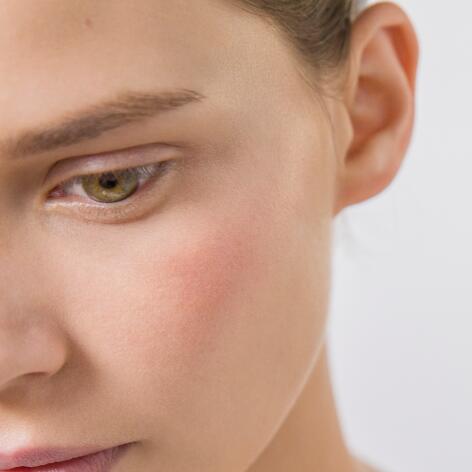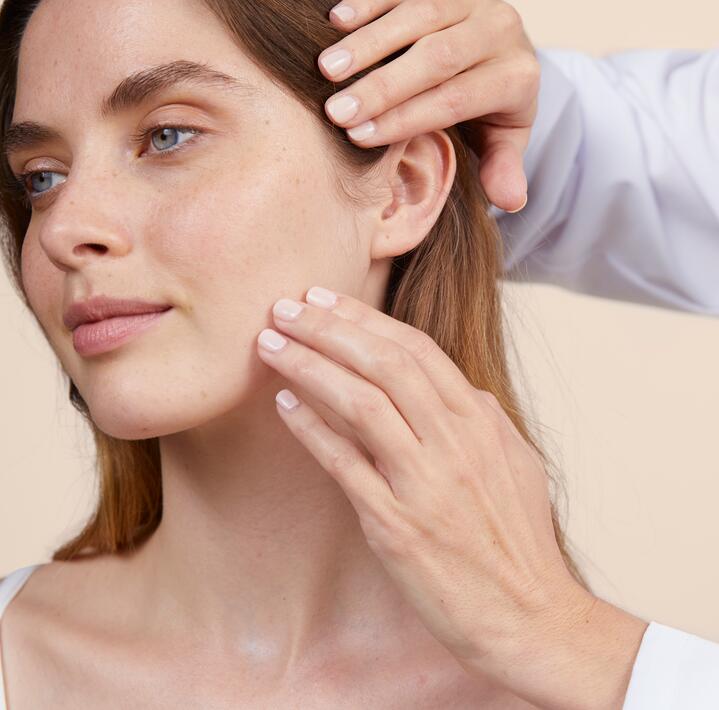How can you tell the difference between intolerant and allergy-prone skin?
Intolerant and reactive skin is fragile by nature. This is due to the fact that the skin barrier is not as protective as it should be and the sensory sensors on its surface are more easily triggered. This type of skin is therefore less well equipped to resist the aggressions of everyday life. This is why you feel that anything can make it react, in an unpredictable way.
The most common allergic reaction is a contact allergy: the skin reacts to simple contact with a product or material (ranging from perfume to metals) which triggers a reaction in the epidermis. But not all allergic reactions are contact-related: they can also be respiratory-, food- or drug-related.
A: Healthy skin barrier - B: skin barrier











